Hyperhidrosis and Excessive Sweating
Hyperhidrosis, a prevalent condition marked by excessive sweating, can have a profound impact on one's daily life and self-confidence. At Cumberland Skin, our team of specialists is dedicated to understanding and managing hyperhidrosis, which commonly affects the underarms, palms, and soles of the feet. This condition exceeds normal sweating patterns, leading to continuous dampness and potential discomfort.
There are two main types of hyperhidrosis:
-
Primary Focal Hyperhidrosis:
- Characteristics: This is the most common form and typically occurs without any identifiable cause. It is usually localized, affecting specific areas such as the palms, soles, underarms, or face.
- Genetic Link: Primary focal hyperhidrosis often runs in families, suggesting a genetic predisposition.
-
Secondary Generalized Hyperhidrosis:
- Characteristics: This type is linked to underlying medical conditions or can be a side effect of certain medications. Unlike primary hyperhidrosis, it can affect larger or more widespread areas of the body.
If you are experiencing the challenges of hyperhidrosis, our dermatologists at Cumberland Skin offer personalized care and cutting-edge treatments to help you find relief. By scheduling an appointment with one of our trusted providers, you will receive a comprehensive evaluation and an individualized management plan designed to enhance your comfort and improve your quality of life. Let us help you regain confidence and control over this condition.
Examples of Hyperhidrosis
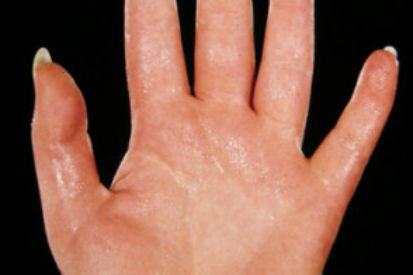


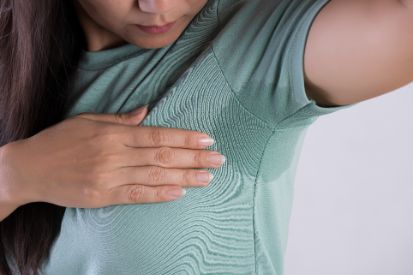
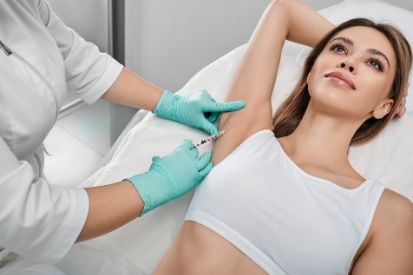
What are the Symptoms of Hyperhidrosis?
- Frequent or abnormal amounts of sweating, specifically in areas of the body such as the palms, soles of the feet, underarms, and groin area.
- Excessive sweating when conditions for sweating do not exist.
- Night sweats in normal health.
What Causes Hyperhidrosis?
- Genetic factors may play a role, as it often runs in families.
- Underlying medical condition
- Side effect of medications.
- Diabetes.
- Gout.
- Menopause.
- Allergic reaction to medications.
- Cancer.
- Stressful situations.
Hyperhidrosis Prevention
Hyperhidrosis & Excessive Sweating FAQs
Dermatologists offer a comprehensive range of treatment options to manage hyperhidrosis, tailored to meet the unique needs of each patient. Topical medications, such as antiperspirants with high concentrations of aluminum chloride, are often the first line of defense for mild to moderate cases. For more persistent sweating, BOTOX® injections are highly effective. These injections temporarily block the nerves that stimulate sweat glands, providing relief for several months.
Yes, hyperhidrosis can indeed be linked to various skin issues. Excessive sweating creates a moist environment that can lead to several dermatological problems. Here are some common skin issues associated with hyperhidrosis and how dermatologists address them:
Skin Irritation:Constant dampness from excessive sweating can cause the skin to become irritated and sensitive. This may lead to redness, itching, and discomfort, particularly in areas like the underarms, groin, and feet. Dermatologists can recommend soothing topical treatments, barrier creams, and proper skincare routines to alleviate irritation and protect the skin.
Fungal Infections:Moist environments are ideal breeding grounds for fungi, making those with hyperhidrosis more susceptible to fungal infections such as athlete’s foot, jock itch, and yeast infections. These infections can cause symptoms like itching, redness, and peeling skin. Dermatologists can prescribe antifungal creams, powders, and oral medications to treat these infections and offer advice on how to prevent them from recurring.
Bacterial Infections:Excessive sweating can also lead to bacterial infections such as impetigo or folliculitis. These conditions can cause pustules, boils, and other skin lesions. Dermatologists can treat bacterial infections with topical or oral antibiotics and recommend hygiene practices to reduce the risk of future infections.
Odor:The combination of sweat and bacteria on the skin can lead to unpleasant body odor, which can be socially and emotionally distressing. Dermatologists can suggest antiperspirants, antibacterial washes, and lifestyle changes to help manage and reduce body odor.
Heat Rash (Miliaria):Excessive sweating can cause blocked sweat ducts, leading to heat rash, characterized by small, itchy bumps on the skin. Dermatologists can provide treatments to soothe the rash and prevent further blockage of the sweat ducts.
Eczema and Dermatitis:Individuals with hyperhidrosis are more prone to eczema and dermatitis due to the constant wetness and friction on the skin. Dermatologists can offer moisturizers, steroid creams, and other medications to manage these conditions and improve skin health.
By addressing both the excessive sweating and the related skin conditions, dermatologists provide comprehensive care for patients with hyperhidrosis. They create individualized treatment plans that not only target hyperhidrosis but also aim to prevent and treat any skin issues that arise, ensuring overall skin health and patient well-being.
Yes, there are specialized antiperspirants designed specifically for hyperhidrosis. These high-strength antiperspirants contain higher concentrations of active ingredients, such as aluminum chloride or aluminum zirconium, which are more effective at reducing sweat production. These formulations work by temporarily blocking the sweat ducts, thereby decreasing the amount of sweat that reaches the skin's surface. Some of these products are available over-the-counter, while others may require a prescription from a dermatologist.
In addition to their potent formulations, these specialized antiperspirants often come in various forms, including gels, creams, and wipes, to accommodate different preferences and areas of application. Dermatologists can recommend the most suitable type and formulation based on the severity of the hyperhidrosis and the specific areas affected. Using these specialized antiperspirants as part of a comprehensive treatment plan can significantly improve the quality of life for individuals dealing with excessive sweating.
Yes, BOTOX® (Botulinum toxin) injections can be an effective treatment for hyperhidrosis. When injected into areas prone to excessive sweating, such as the underarms, palms, or soles of the feet, BOTOX® works by blocking the nerve signals that activate sweat glands. This temporary blockage can lead to a significant reduction in sweating.
The effects of BOTOX® injections for hyperhidrosis typically last several months, and repeat treatments may be necessary to maintain the desired results. This procedure is considered safe and has been approved by regulatory authorities, such as the FDA, for the treatment of hyperhidrosis. Patients often experience a noticeable decrease in sweating within days of treatment, with full effects developing over one to two weeks.
Yes, MiraDry® can effectively reduce excessive sweating, particularly in the underarm area. MiraDry® is an FDA-approved, non-invasive procedure that uses thermal energy to target and permanently eliminate sweat glands in the underarms. By using precisely controlled microwave energy, MiraDry® destroys these glands without affecting the surrounding tissue, leading to a significant and lasting reduction in sweat production.
Patients typically see a noticeable decrease in underarm sweating immediately after the procedure, with full results developing over the following weeks. The treatment not only reduces sweating but also can decrease underarm odor and hair. Since sweat glands do not regenerate, the results of MiraDry® are long-lasting, providing a permanent solution for many individuals struggling with hyperhidrosis. As with any medical treatment, consulting with a dermatologist is crucial to determine if MiraDry® is the appropriate option based on the patient's specific needs and medical history.
Treatment Options for Hyperhidrosis
- Prescription medications.
- Prescription antiperspirants.
- miraDry® (electromagnetic therapy for underarm perspiration).
- Botox® injections.
- And, in extreme cases, surgical procedures.
Related Blog Posts
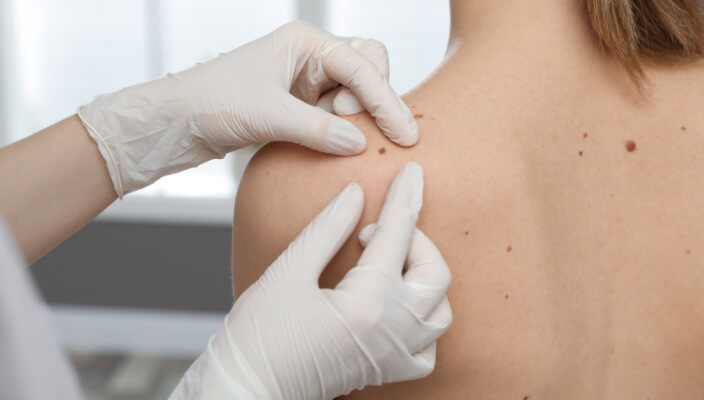
- General Dermatology
- Skin Exams
Preparing for your first dermatology appointment is important because it ensures everything goes as smoothly as possible and that your doctor is up-to-date on the status of your overall health and wellbeing. Here are our expert tips.
Read More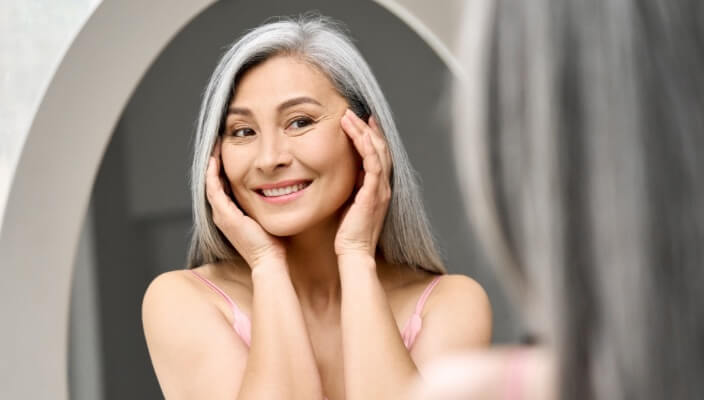
- General Dermatology
- Skin Care
- Cosmetic Treatments
Explore various treatment options available for scars and stretch marks in this comprehensive overview of both non-invasive and medical procedures. Make informed decisions about addressing these common skin concerns.
Read More
- General Dermatology
- Cosmetic Treatments
Explore the myriad benefits of laser treatments. Learn how these advanced procedures can effectively address various skin concerns, from acne scars to unwanted hair, providing you with smoother, rejuvenated skin.
Read MoreFeatured Products

CLn BodyWash
CLn BodyWash is designed for infection- and eczema-prone skin. It is an effective cleanser that is tough on the microbes but gentle on skin. Designed for skin prone to infection, irritation, dermatitis, redness, folliculitis, acne, eczema and compromised skin. 12 fl oz / 354 mL

Epionce Daily Shield Tinted SPF 50 Sunscreen
The cosmetically elegant Epionce Daily Shield Tinted SPF 50 sunscreen provides broad spectrum protection that evens out skin tone while imparting a natural-looking healthy glow. Perfect for all skin types — even sensitive skin.


